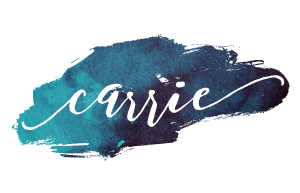A Brief History of Gold Leaf
Since the beginning, gold leaf has been about adorning and honoring important objects and people.
Gold leaf dates back to the Egyptians. They used it to adorn sculptures and coated the rooms of the deceased pharoah’s tombs in it.
In Greece, gold leaf was used to decorate accents of statues.
In Japan, gold leaf had been used to decorate food and even included as an ingredient in medicine.
In Ireland, Italy and Constantinople gold leaf was used to embellish illuminated manuscripts (think Book of Kells)
During the Byzantine Empire they used something called gold ground to mix gold into pigments to paint halos and other parts of devotional paintings.
In each of these ancient traditions it was about devotion and respect.
That’s why I’m using it in my series Anonymous Woman. This portrait series depicts women from the 1940s, embracing the shift of gender norms, going to work while men were at war. This moment was important enough to be documented by history, but while these women were photographed, no one thought to write down their names.
I paint them. And I gild them. And then I name them. You can see one my Ruth paintings in progress here. In this image I’ve affixed the gold leaf but have yet to burnish it.
Burnishing is a delicate process that uses a soft-bristle paintbrush, which is “rubbed” lightly over the gold leaf to remove any excess and to cement the remaining leaf to the surface.
Once I burnished Ruth, she looked like this:
How I love that smooth, rich sheen of gold!
Today you can choose between a fake or imitation gold leaf or the real thing. I choose real gold leaf because I enjoy working with it, and because I see it as a way to speak to the worth of these women, documented by photographers for their moment in time but never given their names.
If you want to learn more about my Anonymous Woman series, you can visit more images of my women here, or sign up BELOW to get first dibs on your favorite Anonymous Woman when my solo exhibition of the same name opens in November 2019.
References for today’s blog post:
History of Gold Leaf: https://craftsmanship.net/sidebar/the-history-of-gold-leaf/

[…] Embroidering into their artwork is a way to engage in conversation, and honor the lives they led. Using real gold leaf is another way to honor and value the lives of these […]
Anonymous women are so powerfully developed and designed as well as demonstrated. I love the gold work. I never knew about Gold Leaf.
Thanks Carrie.
Linda, thank you so much! I really appreciate all of your support, both with Artist Strong AND my art <3
Awesome powerful women… I feel the strength in these paintings. Love the gold leaf.. Great job. Thanks for sharing
Thank you for reading! <3
This artwork is really remarkable! Very powerful. I love the use of gold on it! I do want to mention, though: there is no gold in the Book of Kells. The style of the manuscript looks similar to what we associate with illuminated manuscripts of the medieval period in that it is heavily decorated, but the Book of Kells itself doesn’t have any gold in it.
Book of Kells does include gold leaf. (This website has some good information: http://ireland-calling.com/book-of-kells/)
Thanks for your kind words about the work!